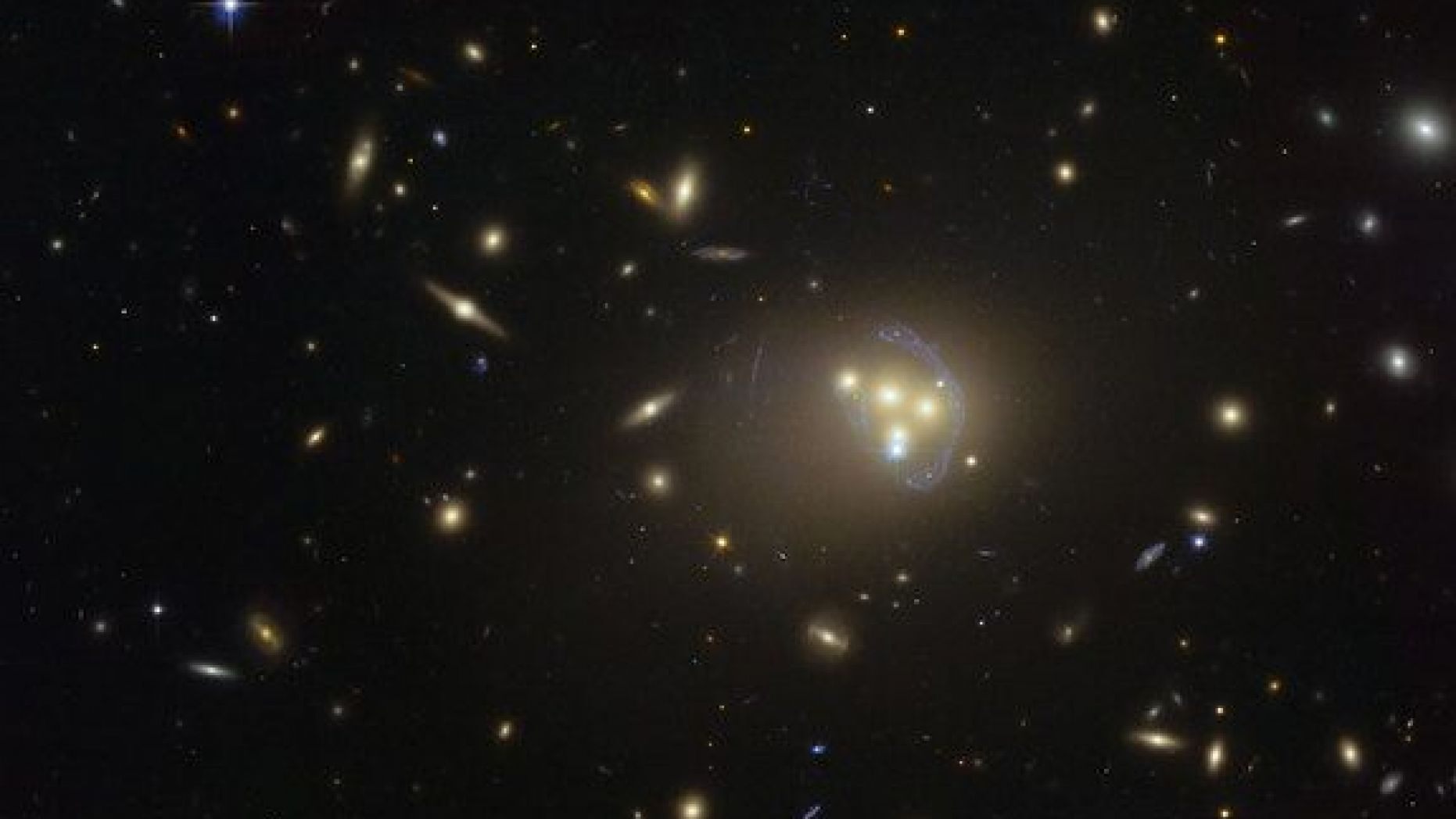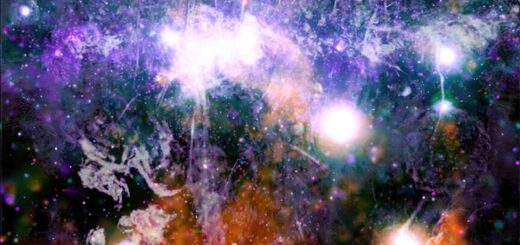100,000 Galaxies: What quest for alien ‘supercivilizations’ really tells us

Astronomers from Pennsylvania State University (PSU) have scrutinized 100,000 galaxies for signs of life – the most exhaustive such study ever undertaken – and recently published their results in the prestigious Astrophysical Journal. What did they find? Nothing. Nada. Nichts.
Score one more failure for those who believe that life generally and human life specifically are nothing miraculous – that given enough time, life inevitably materializes on its own. “These galaxies are billions of years old,” explains Jason Wright, one of the PSU researchers quoted in a recent news article, “which should have been plenty of time for them to have been filled with alien civilizations, if they exist.”
Plenty of time, indeed.
The decades-long, collective failure of our best and brightest efforts to find life elsewhere in our vast universe, with its trillions upon trillions of stars, represents a serious threat to the belief that life is nothing special. That, at its core, it is but a marvelous accident, orchestrated by natural laws, which themselves are fortunate, self-created accidents.
Other recent and ongoing attempts to find signs of extraterrestrial life have come up empty handed as well. The discovery since 2007 of fast radio bursts (FRB) seemingly from deep space and evincing a certain mathematical pattern created a paroxysm of real excitement. Some claimed that here, at last, was evidence of ET phoning home. But now, according to the latest news reports, John Learned from the University of Hawaii – an observer of FRBs – says they’re probably nothing more than quirky reflections from satellites in near-earth orbit or something else equally mundane.
The decades-long, collective failure of our best and brightest efforts to find life elsewhere in our vast universe, with its trillions upon trillions of stars, represents a serious threat to the belief that life is nothing special. That, at its core, it is but a marvelous accident, orchestrated by natural laws, which themselves are fortunate, self-created accidents.
During my graduate studies at Cornell, I had the enormous privilege of taking a course on the search for extraterrestrial intelligence (SETI) from the father of the subject himself, Frank Drake – and also of having him on my PhD thesis committee. Frank is credited with conducting the first-ever hunt for intelligent life in the universe.
In 1960, he used Puerto Rico’s 1,000-foot-diamenter Arecibo radio telescope – the largest instrument of its kind in the world – to scan a pair of relatively nearby stars for signs of intelligent life. He called it Project Ozma. Frank was hoping that, because the stars were sun-like, they might be orbited by earth-like planets inhabited by earth-like (or even more advanced than earth-like) lifeforms. He ended up detecting nothing but static.
Since Frank’s pioneering effort, legions of clever, hope-filled SETI researchers have tried nearly every trick in the book to hook up with life elsewhere in the universe. NASA and other space agencies have dispatched into the solar system and beyond all kinds of spacecraft – with little shovels to dig up microbes on the Martian surface and elsewhere; with hyper-sensitive eyes and ears to detect the faintest of ET-like footprints or whispers; with golden records of sounds from Earth, and even a plaque showing our location in the cosmos, on the chance that ETs will one day use it to find their way to us.
Scores of our most brilliant astrophysicists have devised shrewd ways of surmising the existence of planets circling distance stars. In journal articles and in the media, they speculate extravagantly about the possible environments of these hypothetical worlds and the likelihood of their having life – all without actually being able to see a single one of the putative, extrasolar planets.
SETI researchers have even figured out a really smart way to recruit Earth’s entire population – all seven billion of us – to help search the heavens for ET. You yourself can become part of the populist effort by signing up for The Planetary Society’s SETI@home research program. To date six million people in 226 countries have taken part. The result? Need I tell you?
The decades-long, collective failure of our best and brightest efforts to find life elsewhere in our vast universe, with its trillions upon trillions of stars, represents a serious threat to the belief that life is nothing special. That, at its core, it is but a marvelous accident, orchestrated by natural laws, which themselves are fortunate, self-created accidents.
People who believe such things have always invoked the alleged magical powers of time to support their rational-material worldview – the idea that, given billions of years, just about anything can happen by chance, even life.
That was the opinion of George Wald, the late Harvard biologist and 1967 co-recipient of the Nobel Prize in Physiology or Medicine. He said this in a 1954 article titled, “The Origin of Life,” published in Scientific American:
“Time is in fact the hero of the plot. … What we regard as impossible on the basis of human experience is meaningless here. Given so much time, the ‘impossible’ becomes possible, the possible probable, and the probable virtually certain. One has only to wait; time itself performs the miracles.”
Unfortunately for Wald and those who agree with him, time is proving to be not the hero, but the enemy of the unfolding plot. With every failure of a SETI effort – with every year that goes by without our seeing any overt signs anywhere of an ET, even in cosmic incubators many billions of years old – life on Earth appears to become more and more exceptional, not less.
Indeed, right now it appears as if the late Belgian chemist Ilya Prigogine – sole recipient of the 1977 Nobel Prize in Chemistry – appraised things more accurately than did Wald. “The statistical probability that organic structures and the most precisely harmonized reactions that typify living organisms would be generated by accident,” he estimated, “is zero.”
And the matter doesn’t even end there. In every SETI effort, we have a vivid illustration of how truly extra-special we human beings are compared to all other forms of life known to science.
No, it isn’t our IQ that makes us singular – plenty of other animals have intelligence, as it turns out. Nor is it any other one of a long list of human attributes. The one telling difference is this: No creatures other than we evidence the slightest interest in the extraterrestrial world. Why should they if, according to modern biology, their cellular progenitors sprang into being and adapted over long periods of time in a strictly terrestrial environment?
When my beloved black Lab Annie looks up at the stars, she sees— well, stars. When you and I look up at the heavens, we see things that make us wonder: Are we alone? Where did we come from, really? Is there a God?
We humans, and we humans only, spend unheard of amounts of time, money, and energy building gigantic devices like the Arecibo Radio Telescope and designing ingenious experiments like Project Ozma to find answers to those far-out questions. They aren’t completely scientific enquiries, of course. But as we see from SETI’s very latest studies, so far science alone is doing a pretty good job of making the case that life is something exceptional … and humans beings are positively unique.



 Creators of mankind
Creators of mankind Description of “Tall white aliens”
Description of “Tall white aliens” Where they came from?
Where they came from? About hostile civilizations
About hostile civilizations The war for the Earth
The war for the Earth “Tall white aliens” about eternal life
“Tall white aliens” about eternal life Video: “Nordic aliens”
Video: “Nordic aliens” Aliens
Aliens Alien encounters
Alien encounters The aliens base
The aliens base UFO
UFO Technology UFO
Technology UFO Underground civilization
Underground civilization Ancient alien artifacts
Ancient alien artifacts Military and UFO
Military and UFO Mysteries and hypotheses
Mysteries and hypotheses Scientific facts
Scientific facts


















